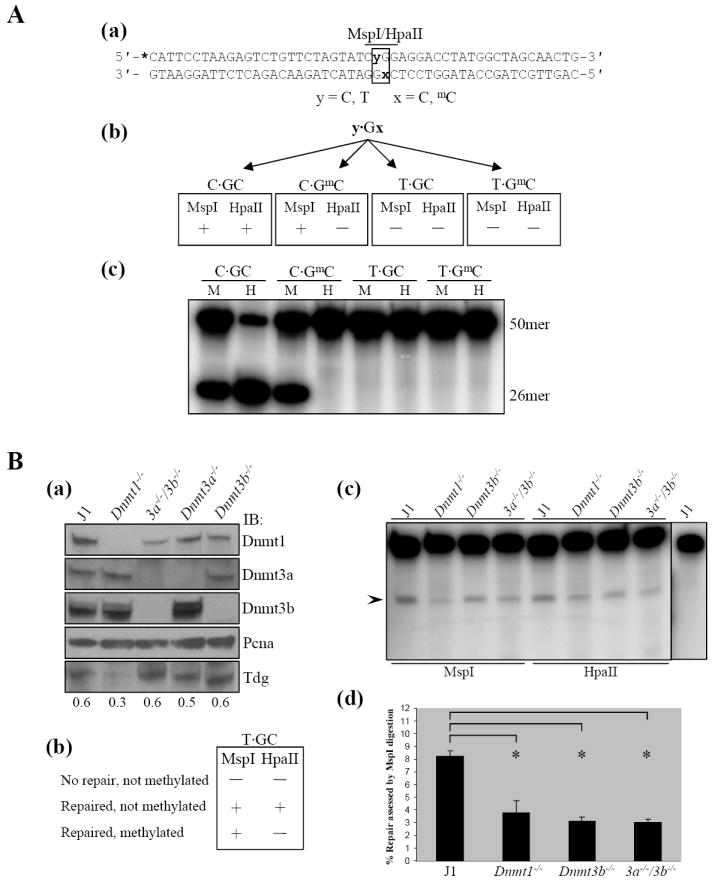Figure 3.

DNA methyltransferases stimulate base excision repair of T·G mismatches. A: Design and testing of oligodeoxyribonucleotides (ODNs) used in a mismatch repair assay. (a) Sequence of the double-stranded ODN. The sense strand contains either a normal CCGG site or a mutated CTGG site. The antisense strand contains either C or 5mC within an MspI/HpaII recognition site. Positions of variable nucleotides y and x are shown in bold. The MspI/HpaII recognition sequence is indicated with a bar. The asterisk indicates the position of the 32P label. (b) Predicted sensitivity to MspI or HpaII digestion of the control C·GC and C·GmC ODNs compared to the mismatched T·GC and T·GmC ODNs. (c) MspI digestion of the control ODNs results in the expected 26 nt long radiolabeled fragment from both controls, while a 26 nt long fragment is only observed after HpaII digestion of the unmethylated control. In contrast, T·G mismatch ODNs are refractory to digestion by either enzyme. M, MspI. H, HpaII. B: De novo DNA methyltrasnferases stimulate repair of T·G mismatches. (a) Evaluation of Dnmt and Tdg protein levels in J1 and Dnmt null ES cells. Nuclear extracts prepared from each cell line were immunoblotted using antibodies specific for Dnmt1, Dnmt3a, Dnmt3b and Tdg to verify the expression of Tdg and the absence of specific Dnmt expression in each cell line relative to wild-type J1. Immunoblot for Pcna served as a loading control. (b) Predicted T·GC ODN sensitivity to digestion by MspI or HpaII depending on extent of repair/DNA methylation. (c) Typical results from one of three independent experiments in which the T·GC ODN was incubated with wild-type J1 or Dnmt null ES cell nuclear extracts followed by digestion with either MspI or HpaII. The expected 26 nt repair product produced as a result of digestion is indicated by the arrowhead. In the absence of either Dnmt3b and/or Dnmt3a there is a reduction in repair efficiency when compared to wild-type nuclear extracts (refer to text for discussion of Dnmt1 null extracts). As a control (last lane), T·GC ODN was used in a repair assay but was not digested. Lack of a 26 nt fragment indicates the ODN is being repaired and not merely nicked 5′ to the mismatched thymine. (d) Quantitation of differences in the extent of mismatch repair by extracts from normal ES cells (J1) and ES cells nullizygous for the indicated Dnmts. Error bars represent the mean (± SD) of three independent experiments. [*] P < 0.005
